Music Reviews
Classical Music - Part 23 - February, 2001Introducing Yourself to the Classics
Part I
Jason Serinus
Ratings: Extraordinary Good Acceptable Mediocre Poor

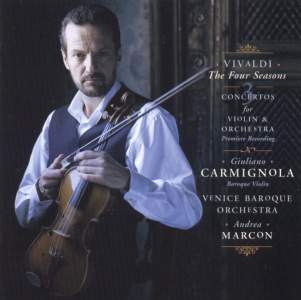
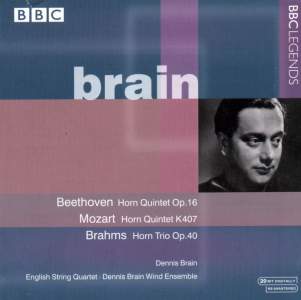
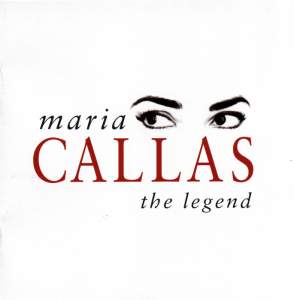
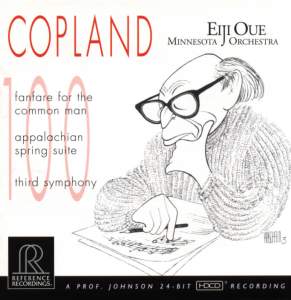
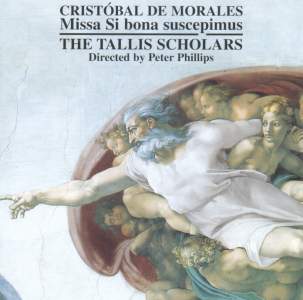
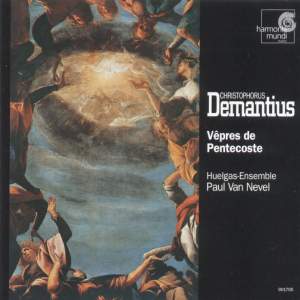
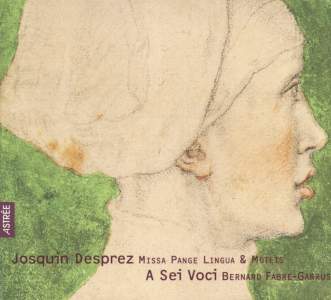

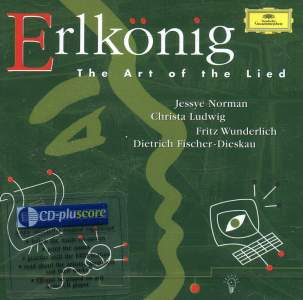
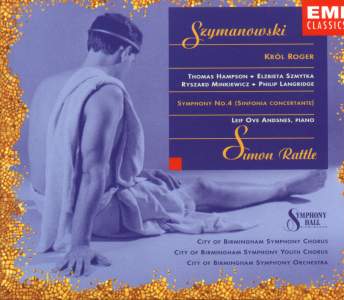
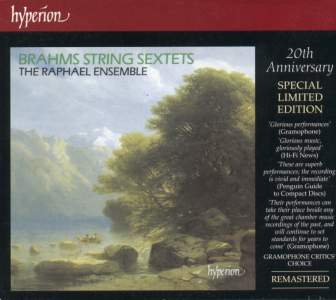
When I began writing classical reviews for this august online publication, I simply jumped in, hoping you the reader would tap into my excitement for the wide variety of classical composition that deeply touches my heart. Throughout this period, I have continually harbored concern that only "classical folks" would read my words, while the rest would skip to genres they were more familiar with. After all, how many times have I asked someone, "Do you like classical music?" only to receive in reply:
"I don’t know much about it, but I do like Vivaldi’s Four Seasons."
Happily, some recent compilations provide good entry points for those wishing to familiarize themselves with classical basics. The bargain label Naxos has released two 2-CD sets:
THE A TO Z OF CLASSICAL MUSIC • NAXOS 8.555319-200
THE A TO Z OF OPERA • NAXOS 8.555037-38
PERFORMANCE: VARIES FROM
TO
SOUND QUALITY:
The first comes with a 562 page booklet that covers the history of composition from Gregorian Chant to the contemporary Philip Glass; the opera compilation contains 762 pages of notes that, among other things, list characters and summarize plots for more operas than you will ever see in this lifetime. The discs themselves offer basic snippets from several centuries’ worth of memorable compositions. All in all, this is quite a bargain, and quite recommendable.
What Naxos doesn’t supply, however, is a guarantee that all performances will be more than workmanlike. Naxos’ "Spring" snippet from Vivaldi’s Four Seasons will suffice for background music in the dentist’s office or during rush hour traffic, but it fails to engage on more than surface levels. For this great music, turn instead to two very different recent issues:
VIVALDI • THE FOUR SEASONS • CARMIGNOLA • MARCON •
SONY SK 51352
PERFORMANCE:
SOUND QUALITY:

VIVALDI • THE FOUR SEASONS • CHUNG • EMI CLASSICS 7243 5 57015 2 7
PERFORMANCE:
SOUND QUALITY:
These equally recommendable performances could hardly be more different. Sony’s imaginative period instrument rendition features Giuliano Carmignola on baroque violin, with Andrea Marcon conducting the 15-member Venice Baroque Orchestra in both The Four Seasons and three never-before-recorded violin concertos. Carmignola is a whiz, his winning tone and immaculate technique providing much enjoyment. The sonics, too, are beautifully clean and pristine, with the leaner sound and sometimes delicate timbre of period instruments a special delight. Once you hit play, you may find yourself mesmerized by the vitality, freshness, and sheer beauty of this lively interpretation. If you are accustomed to modern instrument performances of this music, you will find this recording an ear opener.
The superb violinist Kyung Wha Chung’s modern instrument interpretation is accompanied by the 15 members of the St. Luke’s Chamber Ensemble. Chung is one of the great violinists of our time, and she invests her playing with a care and warmth of spirit that are simply irresistible. Save for her Adagio in "Summer," which is one second faster than Carmignola’s, and her Adagio Molto in "Autumn," which is over a minute faster than his, all of her playing is considerably slower. By and large, Chung’s timings are a good 30 seconds slower than Carmignola’s, which makes for major differences in movements that only last two to four minutes. While this renders Chung’s more relaxed performance less showy, what we hear sounds so right and inviting as to feel like a "welcome home" to this very familiar music. The only disappointment, in fact, is the sound, which is so over-reverberant as to make the St. Luke’s Chamber Ensemble sound like it is comprised of far more than 15 players.
Back to the Naxos introductory boxes. Among accessible contemporary composers, lack of space forces Naxos to skip John Adams, Steve Reich, Aaron Copland, Lou Harrison, and a host of other greats. Try:
COPLAND: THIRD SYMPHONY, ETC. • OUE • MINNEAPOLIS ORCHESTRA • REFERENCE RECORDINGS RR-93CD
PERFORMANCE:
SOUND QUALITY:

This HDCD disc offers stupendous sonics for the Fanfare for a Common Man, Appalachian Spring Suite, and the Third Symphony. The latter, from which the Fanfare is derived, is one of the great American symphonies of the 20th Century. The interpretation is excellent, and your subwoofers will have a field day.
Naxos also has no choice, on two discs of excerpts, but to slight chamber music. For two beautiful chamber masterpieces, please listen to:
FRANZ SCHUBERT • STRING QUINTET IN C MAJOR • DEUTSCHE GRAMMOPHON D 125035
PERFORMANCE:
SOUND QUALITY:
Played by the Emerson String Quartet and cellist Mstislav Rostropovich, this disc was most recently available in a 2-disc Emerson set of late Schubert chamber music. Schubert was approaching death from syphilis when he composed this great work at the age of 31. Its famed Adagio, which some consider the greatest single movement in all of chamber music, to these ears speaks of the other side. Except for a few brief cries of pain, it sings of a transcendent peace that, in this interpretation, becomes truly transporting. This is a great performance. The sound is probably better in the newer two-disc set.
Equally memorable is Beethoven’s "Archduke" Piano Trio in B flat, Op. 97, as heard on:
BEETHOVEN: PIANO TRIOS • CHUNG TRIO • EMI D 106417
PERFORMANCE:
SOUND QUALITY:
To discover how perfectly the magnificent Chung musicians capture the spiritual elevation of Beethoven who, like Schubert, managed to transcend his personal pain (increasing deafness) while composing a work that is filled with joy and light, compare this recording with a recent Sony authentic instrument issue:
BEETHOVEN: ARCHDUKE & GHOST TRIOS • JOS VAN IMMERSEEL • VERA BETHS *ANNER BYLSMA • SK 51353
PERFORMANCE:
SOUND QUALITY:
The Sony assemblage of highly regarded authentic instrument players certainly gets all the notes right. Alas, this ensemble misses the lightness, sheer delight, and exalted beauty that infuse the Chung interpretation. (There’s also much too much reverb and distance on the period instruments). As in the Vivaldi comparison, the unpretentious Chungs earn a star in the firmament for their ability to transform printed notes into musical greatness.
There are several other recent chamber music issues that will bring great rewards. One, which plays in the background as I write, is
BEETHOVEN • MOZART • BRAHMS, ETC./BRAIN • BBC LEGENDS BBCL 4048-2
PERFORMANCE:
SOUND QUALITY:
In more than acceptable mono, the great late horn player Dennis Brain joins an assortment of other excellent players for cherishable live performances of Beethoven’s Quintet for Piano, Oboe, Clarinet, Horn and Bassoon in E flat major, Op.16; Dukas’ Villanelle for Horn and Piano; Marais’ Le Basque in an arrangement for horn and piano; Mozart’s Quintet for Horn, Violin, 2 Violas and Violoncello in E flat major, K. 407 (K.386c); and Brahms’ Trio for Piano, Violin and Horn in E flat major, Op.40. This disc gives you a good taste of three great chamber works.
In October, the wonderful English label Hyperion celebrated its twentieth anniversary by issuing excellent remasterings of 20 of its top recordings. In the chamber music repertoire, I highly recommend:
FAURE • PIANO QUARTETS • DOMUS • CDA 20166
BRAHMS STRING SEXTETS • THE RAPHAEL ENSEMBLE • CDA 20276
PERFORMANCES:
SOUND QUALITY:
The Gramophone award winning Domus recording of Faure’s Piano Quartets No. 1 in C minor, Op. 15 and No. 2 in G minor, Op. 45 are considered the greatest modern performances of these elegant works. If you don’t know Faure, I urge you to hear both these performances and his equally loveable Quintets, also on Hyperion.
Brahms’ String Sextet No. 1 in B flat major, op. 18 and String Sextet No. 2 in G major, op. 36 are early, frequently sunny, immensely likeable compositions. Brahms left only 21 chamber masterpieces; the rest he destroyed. His sextets are among the lightest and most immediately accessible of the lot. I LOVE Sextet No. 1. The playing of the Raphael’s has replaced my previous favorite recording, by Les Musiciens on Harmonia Mundi. (There’s a triumphant first movement recapitulation that Les Musiciens play like no one else, but the Raphaels in general invest far more sound and creativity in their playing)). The Raphaels certainly top, in both expressivity and recording quality, the star sextet of Stern, Lin, Laredo, Tree, Ma and Robinson captured in 20-bit sound by Sony on S2K 45820. Plus the value of the Raphael disc (one full-priced disc rather than two for the same works) cannot be ignored.
Sextet No. 2 is also available in a string orchestra transcription by Dmitry Sitkovetsky (with the NES Chamber Orchestra -- paired with Dohnanyi’s Serenade in C major, op. 10)) on the recently-released NONESUCH 79545-2. The playing is lovely, but I find Brahms’ original string arrangement far more effective in communicating dramatic contrasts and imaginativeness of line.
Turning to the early vocal music that the Naxos anthology touches upon ever so lightly, most highly recommended is the Hyperion 20th Anniversary reissue (or original issue) of
HILDEGARD OF BINGEN • A FEATHER ON THE BREATH OF GOD • EMMY KIRKBY • GOTHIC VOICES • CHRISTOPHER PAGE * CDA 20039
PERFORMANCE:
SONICS:
This is the disc that put the early Christian mystic Hildegard on the map. The singing is extraordinary, and the music transcendent.
Also recommendable are three very different recent Early Music issues:
DESPREZ • MISSA PANGE LINGUA & MOTETS • A SEI VOCI • BERNARD FABRE-GARRUS • ASTRE E 8639
DEMANTIUS • VEPRES DE PENTECOSTE HUELGAS ENSEMBLE • HARMONIA MUNDI HMC 901705
CRISTOBAL DE MORALES • MISSA SI BONA SUSCEPIMUS • THE TALLIS SCHOLARS • GIMELL CDGIM 033
PERFORMANCES:
SONICS:
I am always partial to the smooth, well-integrated singing of the superb Tallis Scholars. The de Morales, their latest disc, is beautifully voiced and filled with sorrow. As moving as it is, I prefer Renaissance vocal music that is somewhat lighter in spirit. My favorite Tallis Scholars recordings, again featuring the wonderful soprano Tessa Bonner, remain the early Palestrina discs and the Gramophone award-nominated:
TAVERNE TYE SHEPPARD: WESTERN WIND MASSES • THE TALLIS SCHOLARS • CDGIM 027
PERFORMANCE:
SONICS:

I frequently use this disc as background music for massage. Containing settings of the same text by three different English Renaissance composers, its gentle, elevated spirituality always fills me with a sense of calm, peace, and appreciation for the beauty of life.
Finally, if you’re not feeling particularly spiritual, and instead want to get down and dirty, by all means get the hilarious recent reissue of
FRICASSEE PARISIENNE • ENSEMBLE CLEMENT JANEQUIN • HMA 1951174
PERFORMANCE:
SONICS:
Filled with 24 French Renaissance polyphonic chansons, this recording is highlighted by Dominique Visse’s unique countertenor. Sounding like a cross between a spoiled brat and an impudent child, Visse and his ensemble will leave you in stitches with their animal imitations and absurd, perfectly voiced chatter.
Two recent Bach performances cannot be recommended highly enough:
BACH: CANTATAS BWV 82, 158 & 56 • MATTHIAS GOERNE/CAMERATA ACADEMICA SALZBURG/NORRINGTON • DECCA 289 466 570-2
BACH: GOLDBERG VARIATIONS • MURRAY PERAHIA • SONY CLASSICAL SK 89243
PERFORMANCES:
SONICS:
Both Perahia and Goerne (an interview with whom will appear shortly on this site) received Grammy nominations for these recordings. The tender beauty of Goerne’s understated rendition of Bach’s famed solo cantata, Ich habe genug, BWV 82, perfectly accompanied by Norrington, assures it a place in the history of great Bach recordings. As for the Perahia, which I plan to discuss at length in a future installment of these classical reviews, it is a work of genius through and through. I can think of no better introduction to the work of Bach than these two discs.
When it comes to operatic offerings, the quality of Naxos’ singing and conducting varies from excellent to uninvolvingly poor. (Luba Orgonasova, Miriam Gauci and Roberto Servile earn the highest marks). Although Naxos’ Barbara Zagorzanka delivers a fine performance of Roxana’s aria from Karol Szymanowski’s 1918 homoerotic opera King Roger, one can learn a great deal about singing by comparing her performance with that by Elzbieta Szmytka on the recent Gramophone award-winning recording:
SZYMANOWSKI: KROL ROGER • SYMPHONY NO. 4 • SIMON RATTLE • EMI 5 6823-2
PERFORMANCE:
SOUND QUALITY:
As for great singing, in the soprano repertoire, you owe it to yourself to hear, in Italian and other repertoire, a recent, almost ideal compilation:
MARIA CALLAS: THE LEGEND • EMI 57057-2
PERFORMANCE:
SOUND QUALITY:

Callas proves that singing can be beautiful without being either perfect or pretty. Even when her vocal faults are in evidence, her tone and emotional involvement are unfailingly right for the music at hand. Callas’ aria from Gluck’s Orpheus and Euridice is incomparably moving. Only Kathleen Ferrier in live performance so tugged the heart in this great music.
In German repertoire, look for reissues by Lotte Lehmann, whose performances of Leonora’s magnificent aria about love and freedom from political oppression from Beethoven’s Fidelio, and sentiment-laden duet Tauber from Korngold’s Die tote Stadt with the irreplaceable tenor Richard, leave her Naxos counterparts in the dust. Equally beloved by yours truly is the singing of the lighter-voiced Elisabeth Schumann. Pearl compilations of arias and songs by both women are sure bets.
Lehmann and Schumann, like Callas, were geniuses whose deep connection with music managed to transcend their vocal limitations. Richard Strauss adored both women, and frequently chose them to interpret his compositions. Scratches, hiss, mono, shallow low notes, and occasional strain on high notes mean little to me when I have the opportunity to hear singing that so deeply communicates the emotional and spiritual heart of music.
Deutsche Grammophon has recently issued several PC-compatible CD-plusscore CD-Roms,. Two are of vocal music, two others of guitar and clarinet. I have so far heard:
ERLKONIG: THE ART OF THE LIED • DG 445 188-2
NESSUN DORMA: THE ART OF THE TENOR • DG 289 463 783-2
PERFORMANCES:
SOUND QUALITY:
The singers, Christa Ludwig, Jessye Norman, Fritz Wunderlich, and Dietrich Fischer-Dieskau, were some of the finest singers in this repertoire in the period of the mid ‘50’s through the early ‘80’s. I personally have other favorites in this repertoire, but the variety of approach employed by these four very different singers makes for quite a fine musical education. PC users can follow the score, repeat whichever passages they choose, remove either voices or accompaniment so they can play or sing along, change tempo and dynamics, and read about the works while listening. Very cool… except if you, like me, own a MAC.
As for the NESSUN DORMA disc, singing as a whole tops Naxos’, but there are still disappointments. Luciano Pavarotti’s "Una furtiva lagrima" is somewhat coarse, his "La donna e mobile" a bit rough; Placido Domingo is a finer artist, but his "Celeste Aida" and "Nessun Dorma" do not fully capture all this music has to offer. Turn instead to two of our greatest tenors in excellent Naxos historical restorations:
CARUSO: COMPLETE RECORDINGS, VOLUME 2 • NAXOS 8.110704
JUSSI BJORLING: OPERA ARIAS • NAXOS 8.11070
PERFORMANCES:
SOUND QUALITY: HISTORIC RESTORATION AT ITS FINEST
One listen, and you’ll understand why opera lovers pray daily for singers who approach these artists’ vocal splendor and emotional rightness.
For the art song repertoire, a large number of older and contemporary composers of stature are featured on:
LOVE SONGS • ARLEEN AUGER • DELOS DE 3029
PERFORMANCES:
SOUND QUALITY:
One in particular receives stellar treatment
SONGS OF NED ROREM • SUSAN GRAHAM • ERATO 8573-80222-2
PERFORMANCES:
SOUND QUALITY:
Soprano Auger’s disc has earned a well-deserved Penguin Guide Rosette, while mezzo Susan Graham’s disc was the runner up for Gramophone magazine’s latest vocal award. These women, blessed by the unfailingly excellent support of piano accompanists Dalton Baldwin and Malcolm Martineau, offer a wide variety of songs, many in English. Their artistry is supremely relaxed, poised, and open-hearted; vocal beauty, interpretive genius, and love shine throughout. No one for whom I’ve played these discs has failed to be touched by their beauty.
Finally, in the modern vocal and choral repertoire, I highly recommend exploration of:
MORTEN LAURIDSEN • O MAGNUM MYSTERIUM • NORDIC CHAMBER CHOIR • BAYER RECORDS 100 305 CD
JOHN HARBISON • AT FIRST LIGHT • ARCHETYPE RECORDS 60106
PERFORMANCES:
SONICS:
Both composers write melodic, accessible music. Lauridsen’s disc contains three choral cycles plus his well-known O Magnum Mysterium. Lauridsen, who created many of these lovely works for U.S. ensembles, picked the Chamber Choir to record the works and plays piano on the disc. The contrast between the Nordic Chamber Choir interpretation of O Magnum Mysterium, and that by the Robert Shaw Chorale (on the recently reviewed Shaw O Magnum Mysterium compilation) makes for a good musical education.
Harbison either wrote his pieces for or heard them first interpreted by many of the forces who perform them on the recording, Forces include the famed mezzo Lorraine Hunt, soprano Dawn Upshaw, and oboist Peggy Pearson.
Having the composers’ blessing, both recordings must thus be considered definitive.
- Jason Serinus -
� Copyright 2001 Secrets of Home Theater & High Fidelity
Return to Table of Contents for this Issue.

